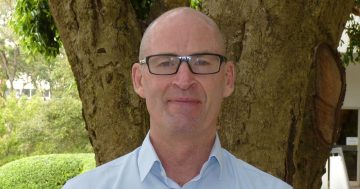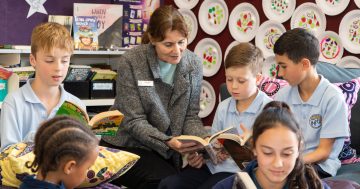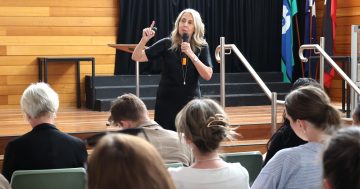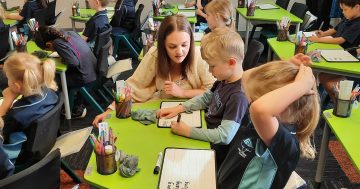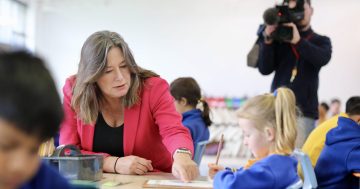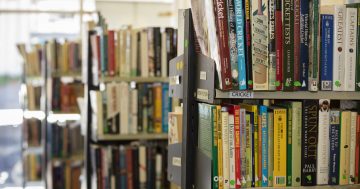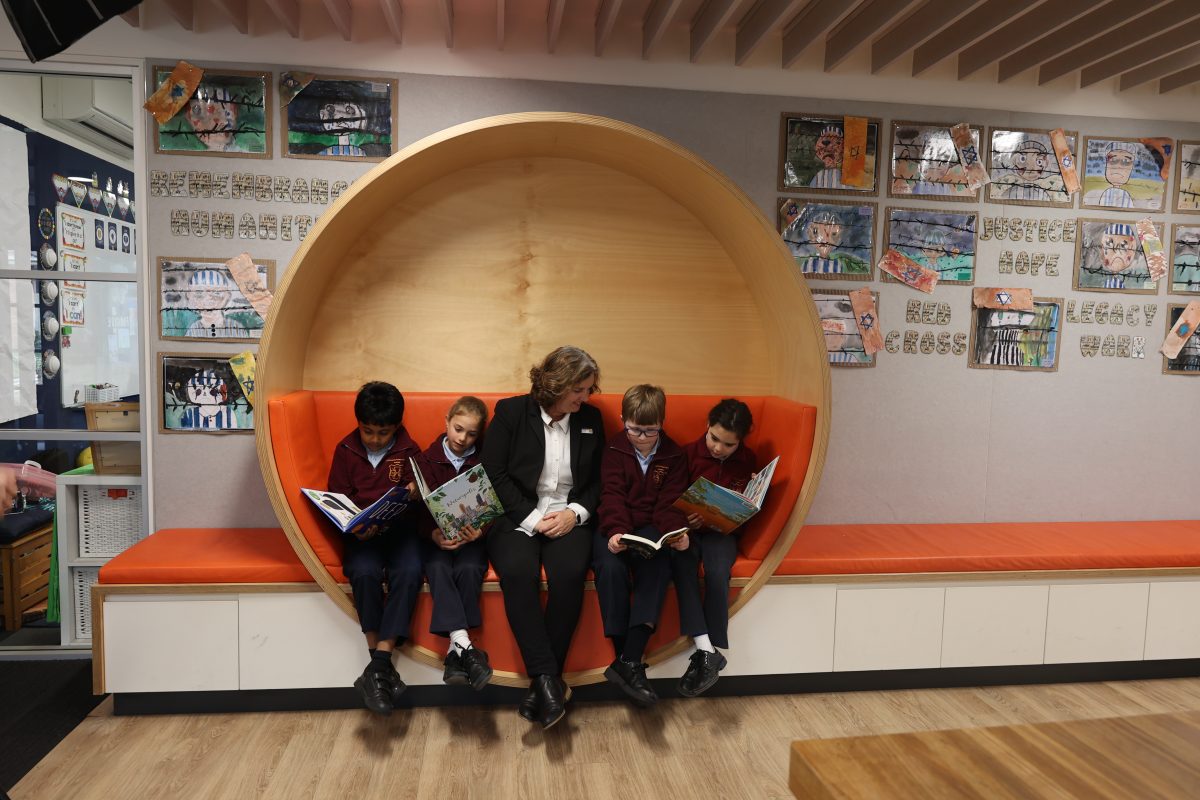
St Vincent’s Primary School Assistant Principal Monique Egan with keen readers. The Canberra Catholic school has achieved high results in NAPLAN using the explicit teaching approach. Photo: Catholic Education.
How did you learn to read?
In my day, there was no question that it was sounding out, breaking down words, and being encouraged to read as much as possible once you had caught on. And use a dictionary.
I don’t recall too many who didn’t catch on, certainly not the numbers that have sparked the so-called reading wars and panic among parents and policymakers in recent years.
This week, the Grattan Institute published a new report claiming one-third of Australian students were failing to learn to read proficiently through the ‘whole-language approach’.
It called this a “preventable tragedy”, costing the nation $40 billion because students unable to read proficiently were more likely to be disruptive at school, unable to get a job and more likely to end up in jail.
The report recommends that all school systems move toward the structured literacy approach based on phonics and explicit teaching.
The fact that whole language is complex to explain should be a red flag in itself, but it’s described as a top-down approach where students are immersed in language and taught to use context cues to understand or guess words’ meaning.
Implicit is that reading is a natural process, like learning to talk, and that students can come to an understanding through their own agency. Maybe, but while I recall reading coming to me naturally, it was something that I was actually taught and practised, not left to flounder.
In this way, whole language has a more ideological than pedagogical basis.
Whole language originated in the 1970s, became all the rage in universities in the 1980s and 1990s, and is embedded in many Australian schools.
Critics of the phonics approach argue English is a language with so many exceptions to the rule that students cannot rely on it.
But children need a starting point and can come to grips with the peculiarities of the language later when they understand the rudiments.
Real autonomy comes with children understanding the basics, like in mathematics, and having a platform on which to build further knowledge. And there is nothing like success to give confidence and enthusiasm.
Most education bureaucrats, including here in the ACT, will say teachers deploy various methods to teach reading, including phonics and whole language.
But whole language appears to have prospered at phonics’ expense and poor reading rates have continued amid ongoing debate.
Schools where structured literacy has been adopted, such as Victoria’s Churchill Primary, have enjoyed a dramatic turnaround in performance.
Closer to home, schools in the Catholic system in the Canberra and Goulburn Diocese also report big successes with their explicit teaching approach.
An inquiry has been underway in the ACT into literacy and numeracy in ACT public schools and is due to report this year.
Hopefully, this latest report will be taken on board to end the equivocacy in statements about teaching reading and put the unproven whole language method to bed.
This will require an overhaul of teacher training so graduates come equipped for success in the classroom.
The inquiry is also focused on equity, so it is instructive that Churchill Primary has twice the number of students in the lowest socio-educational advantage bracket as the national average, the ones most likely to be left behind.
It seems obvious to say it, but it’s more than time to restore the teacher and actual teaching to the centre of education, not in some nostalgic back-to-basics way, but based on the wealth of research showing how humans learn and how the brain functions.













